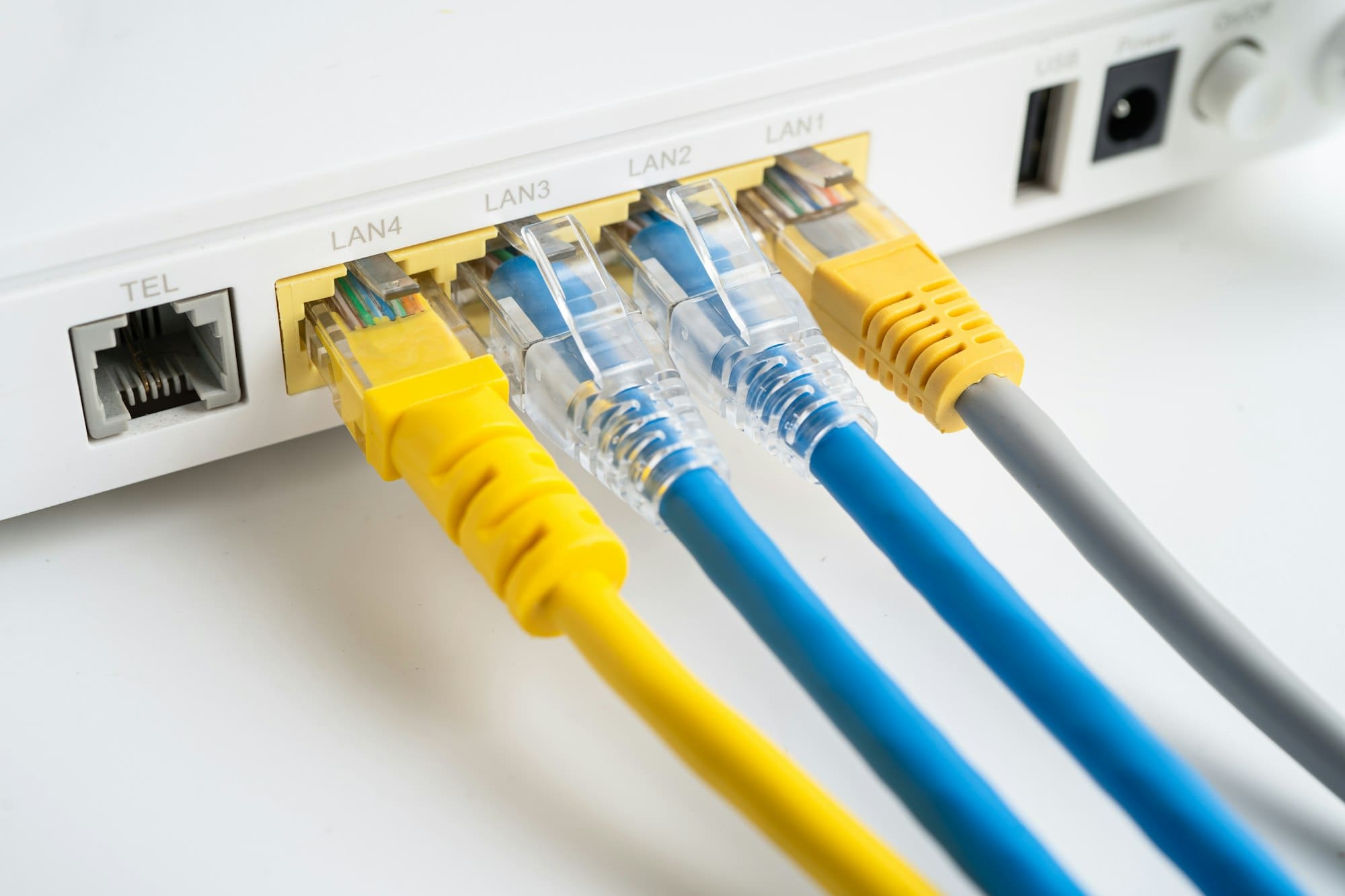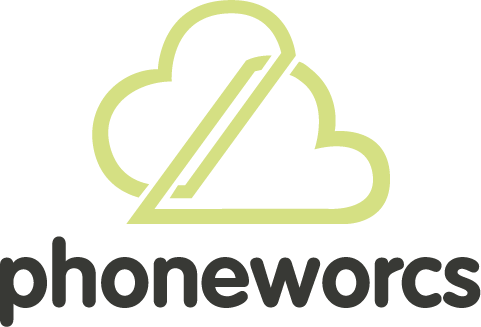In today’s fast-paced business environment, understanding the essentials of business telecoms is crucial for any business owner. With technology constantly evolving, staying up-to-date with the latest terminology can feel overwhelming.
Whether you’re looking to enhance your communication systems, streamline operations, or simply get to grips with industry jargon, this guide covers 44 key terms that every business owner should know.
Join us as we demystify the world of business telecoms and empower you to make informed decisions that will benefit your organisation.
What is Business Telecoms?

Business telecoms refers to the communication systems and services used by companies to facilitate internal and external communication. This includes traditional landlines, mobile phones, internet-based communication like VoIP, email, and messaging platforms.
Effective business telecoms help organisations connect with clients, collaborate with employees, and improve overall productivity. By integrating various communication tools, businesses can streamline operations, enhance customer service, and support remote working arrangements.
44 Key Telecoms Terms for Business Owners
In the dynamic world of telecommunications, understanding key terms is essential for effective communication and decision-making. Below is a comprehensive list of 44 crucial business telecoms terms that will enhance your grasp of the industry and improve your ability to navigate its complexities.
- VoIP (Voice over Internet Protocol): A technology that allows voice calls to be made over the internet rather than through traditional phone lines.
- PBX (Private Branch Exchange): A private telephone network used within a company, allowing users to communicate internally and externally using different communication channels like VoIP, ISDN or analog.
- Cloud Telephony: A type of unified communications as a service (UCaaS) where telecommunication applications, switching, and storage are hosted by a third-party service provider.
- SIP Trunking (Session Initiation Protocol): A method of sending voice and other unified communications services over the internet.
- Unified Communications: The integration of various communication methods, such as voice, video conferencing, email, instant messaging, etc., within a single platform.
- Auto Attendant: An automated system, also known as a digital receptionist, that directs incoming calls to the appropriate extensions or voicemail boxes.
- IVR (Interactive Voice Response): A technology that interacts with callers, gathers information, and routes calls to the appropriate recipient.
- Call Routing: The process of directing calls from one point to another.
- Bandwidth: The maximum data transfer rate of a network or internet connection, influencing how much data can be sent over a specific connection in a given amount of time.
- Ethernet: A system for connecting computers within a local area network (LAN).
- T1 Lines: A high-speed digital network (1.544 mbps) developed by AT&T in the 1960s to support long-distance voice and data.
- ISDN (Integrated Services Digital Network): An international communications standard for sending voice, video, and data over digital telephone lines or normal telephone wires.
- Call Recording: A feature that allows businesses to record conversations for future reference or quality control purposes.
- Toll-Free Numbers: Phone numbers that allow callers to reach businesses without being charged for the call.
- Local Number Portability (LNP): A service that allows a subscriber to select a new telephone carrier without requiring a new number to be issued.
- Teleconferencing: Holding a conference among people at a distance from one another by means of telecommunication devices.
- Softphone: A software program for making telephone calls over the Internet using a computer, rather than using dedicated hardware.
- Multiprotocol Label Switching (MPLS): A technique for speeding up and shaping network traffic flows.
- Quality of Service (QoS): The overall performance of a telephony or computer network, particularly the performance seen by the users of the network.
- Telecom Expense Management (TEM): A business approach to managing telecommunication service expenses such as voice, data, and wireless with a combination of software tools and manual auditing.
- Data Transmission: The process of sending digital or analog data over a communication medium to one or more computing, network, communication or electronic devices.
- Failover: A backup operational mode in which the functions of a system component (such as a processor, server, network, or database) are assumed by secondary system components when the primary component becomes unavailable.
- Firewall: A network security system that monitors and controls incoming and outgoing network traffic based on predetermined security rules.
- Gateway: A hardware device that acts as a “gate” between two networks. It may be a router, firewall, server, or other device that enables traffic to flow in and out of the network.
- Hotspot: A physical location where people can access the Internet, typically using Wi-Fi, via a wireless local area network (WLAN) with a router connected to an internet service provider.
- Latency: A measure of delay. In a network, latency measures the time it takes for some data to get to its destination across the network. It is usually measured as a round trip delay – the time taken for information to get to its destination and back again.
- Load Balancing: The process of distributing network traffic across multiple servers to ensure no single server bears too much demand. This improves responsiveness and increases availability of applications.
- Mobile Device Management (MDM): A type of security software used by an IT department to monitor, manage, and secure employees’ mobile devices that are deployed across multiple mobile service providers and across multiple mobile operating systems.
- Network Interface Card (NIC): A computer hardware component that allows a computer to connect to a network.
- On-Premises: Software and technology that is located within the physical confines of an enterprise, rather than running remotely on hosted servers or in the cloud.
- Packet: A small amount of data sent over a network, such as a LAN or the Internet. Similar to a real-life package, each packet includes a source and destination as well as the content (or data) being transferred.
- Remote Access: The ability to access a computer or a network from a distance.
- Router: A device that forwards data packets along networks. It is connected to at least two networks, commonly two LANs or WANs or a LAN and its ISP’s network.
- Session Border Controller (SBC): A device regularly deployed in Voice over Internet Protocol (VoIP) networks to exert control over the signaling and usually also the media streams involved in setting up, conducting, and tearing down telephone calls or other interactive media communications.
- Virtual Private Network (VPN): A private network that uses a public network (usually the internet) to connect remote sites or users together.
- Wide Area Network (WAN): A telecommunications network that extends over a large geographic area for the primary purpose of computer networking.
- Wi-Fi: A popular technology that allows an electronic device to exchange data or connect to the internet wirelessly using radio waves.
- Wireless Local Area Network (WLAN): A wireless distribution method for two or more devices that use high-frequency radio waves and often include an access point to the Internet.
- Unified Messaging (UM): The integration of different electronic messaging and communications media (e-mail, SMS, fax, voicemail, video messaging, etc.) technologies into a single interface, accessible from a variety of different devices.
- FTTC (Fiber to the Cabinet): This is a telecommunications architecture where a fiber optic cable runs directly from a central office to a special cabinet near the customer’s premises. From this cabinet, a standard copper wire completes the connection to the customer’s building. This approach allows for the high-speed, high-capacity benefits of fiber optic communication for most of the connection’s length, while still utilising existing copper infrastructure for the final segment.
- PSTN (Public Switched Telephone Network): This is the traditional telephone network that uses copper wires to transmit analog voice data. It’s a circuit-switched network, meaning a direct and dedicated circuit is established between the caller and the receiver for the duration of the call. PSTN has been the backbone of global telephony for over a century and continues to be used widely, though it is gradually being replaced by digital and mobile phone networks.
- FTTP (Fiber to the Premises): This is an advanced fiber optic communication infrastructure where a fiber optic cable runs directly from the central office to the premises (home or business) of the customer. Unlike FTTC, FTTP doesn’t switch to copper wire at any point, providing superior speed and data capacity. This makes FTTP the most efficient and fastest mode of broadband technology currently available, as it is capable of delivering high-speed internet services and other digital communications effectively.
- BT’s Big Switch Off: This refers to British Telecommunications’ ongoing project to completely terminate the use of the Public Switched Telephone Network (PSTN) by 2025. The aim is to transition all voice traffic to a fully digitized, IP-based network. The switch-off will impact traditional voice services, as well as broadband services delivered over copper lines (ADSL & FTTC). The endgame is to fully adopt digital services like VoIP (Voice over Internet Protocol) for voice calls, and FTTP (Fiber to the Premises) for high-speed broadband. This transition is expected to offer improved efficiency, speed, and quality of communication services.
- Phoneworcs: Phoneworcs is an innovative telecommunications provider, dedicated to offering a comprehensive range of telecommunication services. Their services span from traditional voice calls and broadband to advanced digital solutions such as VoIP and FTTP. Committed to staying at the forefront of technological advancements, Phoneworcs focuses on providing efficient, reliable, and high-quality communication solutions that cater to the evolving needs of both residential and business customers.
In conclusion, while technical terminology in the business telecoms sector may initially seem daunting, grasping these key terms is essential for navigating this vital area effectively. With a solid understanding of telecoms language, you can enhance your business communication, streamline operations, and ultimately gain a competitive edge.
Don’t let the jargon intimidate you; embrace it as a tool for success. If you’d like to learn more or need assistance with your telecoms strategy, feel free to contact us for more information.
Ready to make the switch?
Get in touch with Phoneworcs today to explore the perfect VoIP system for your business.








